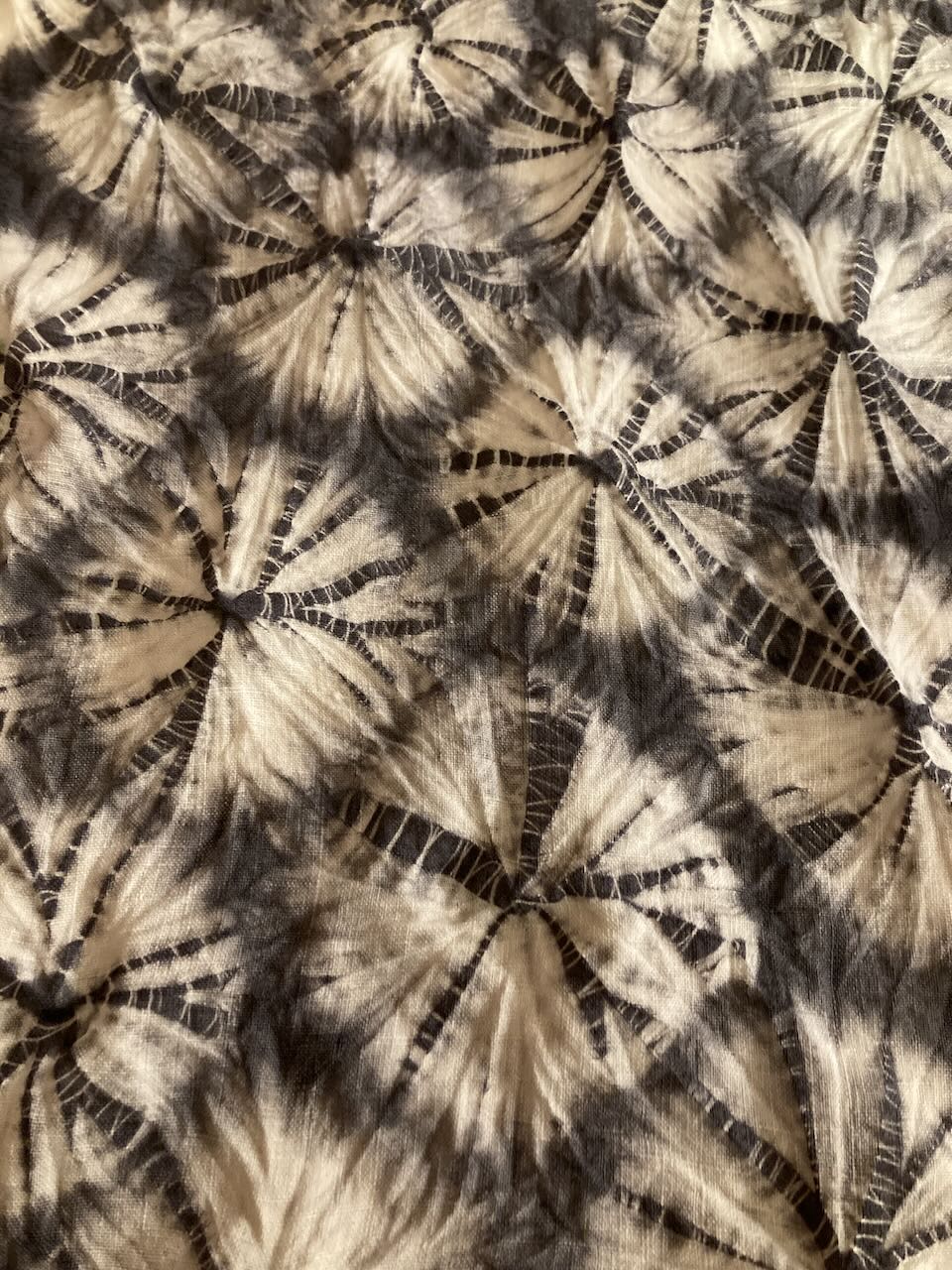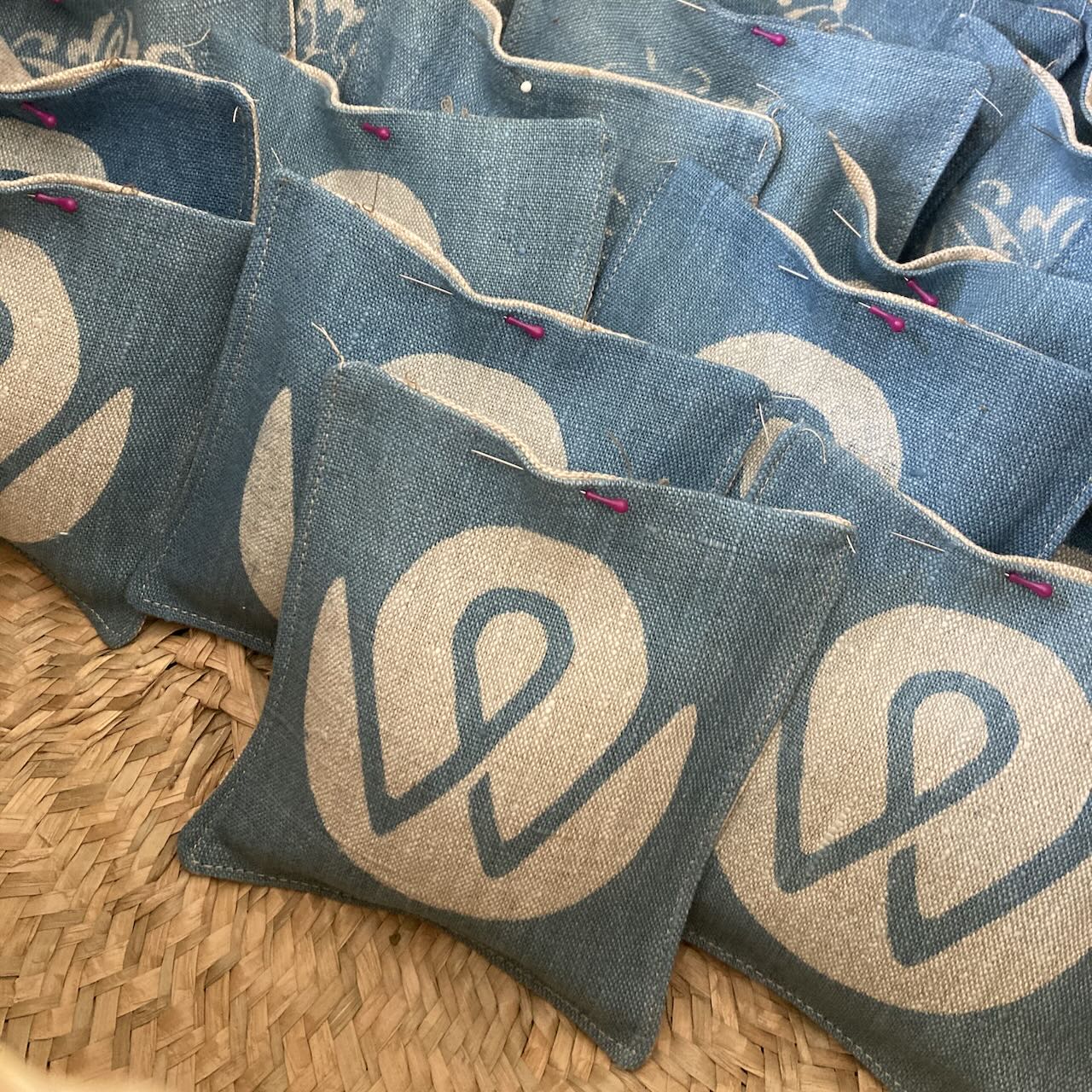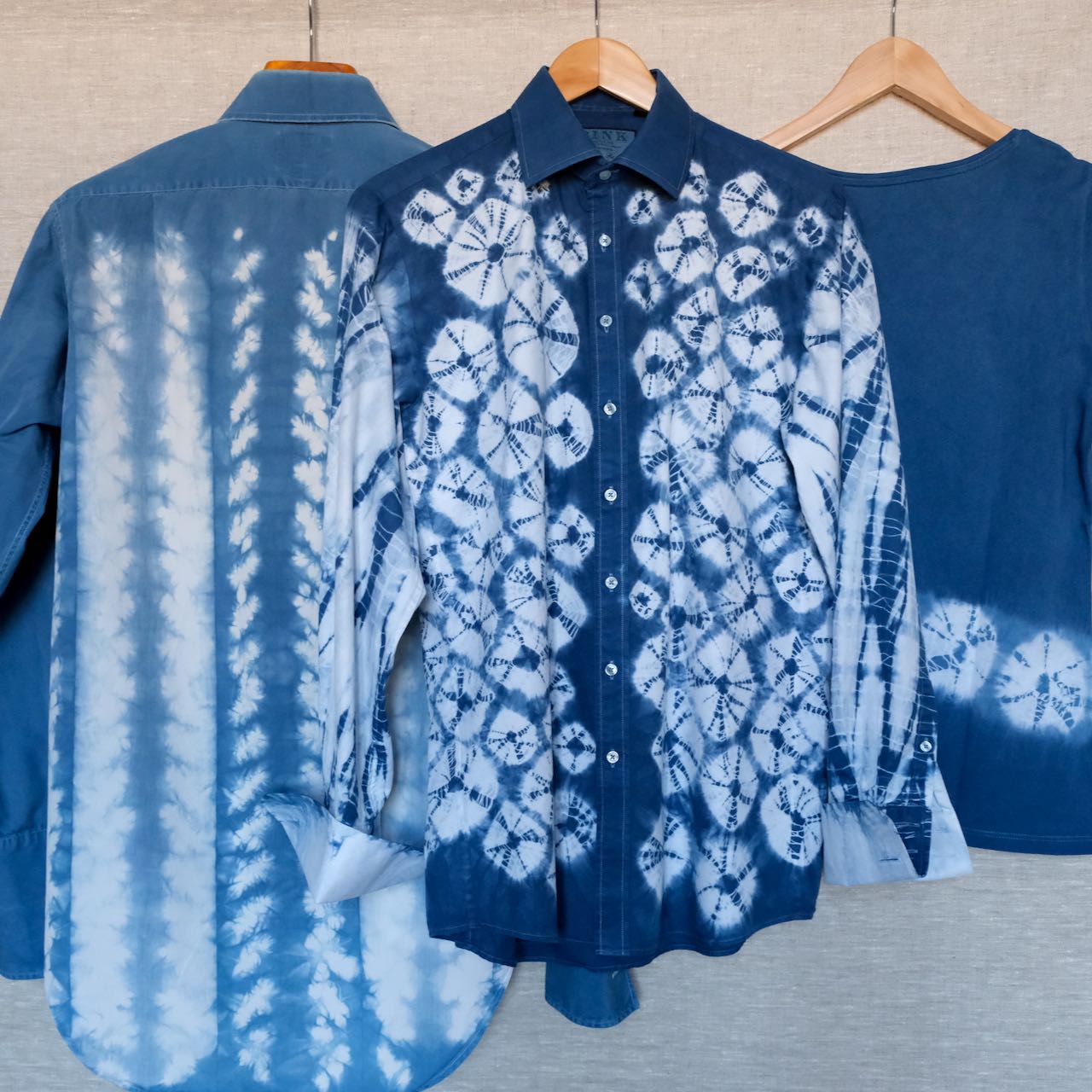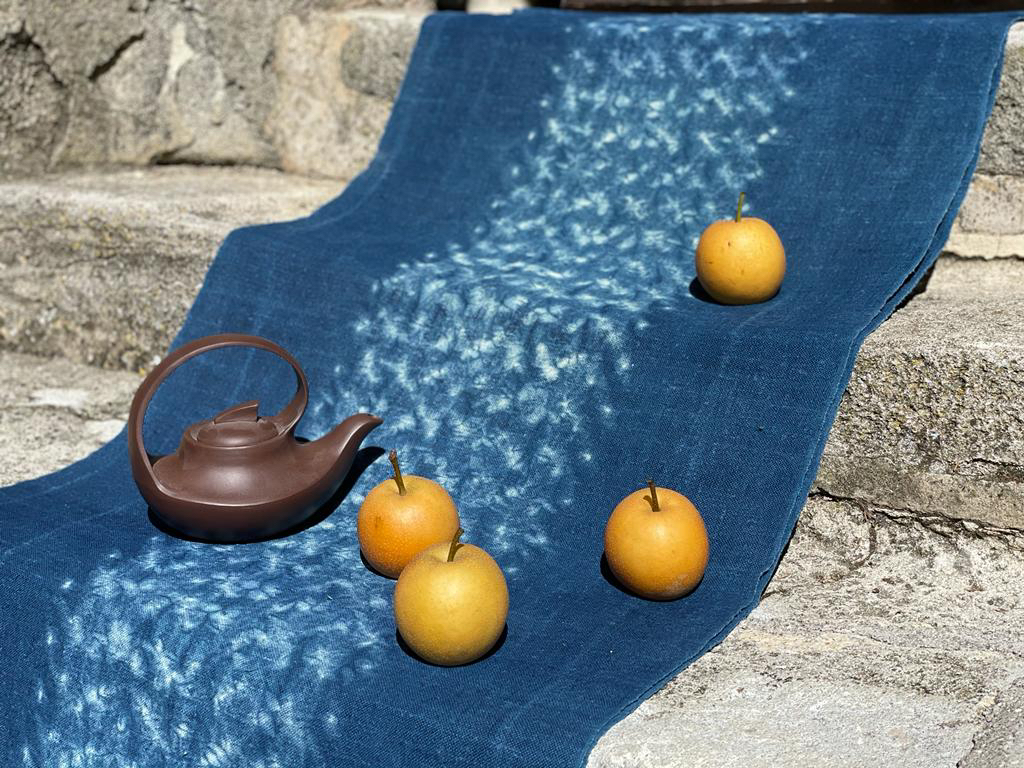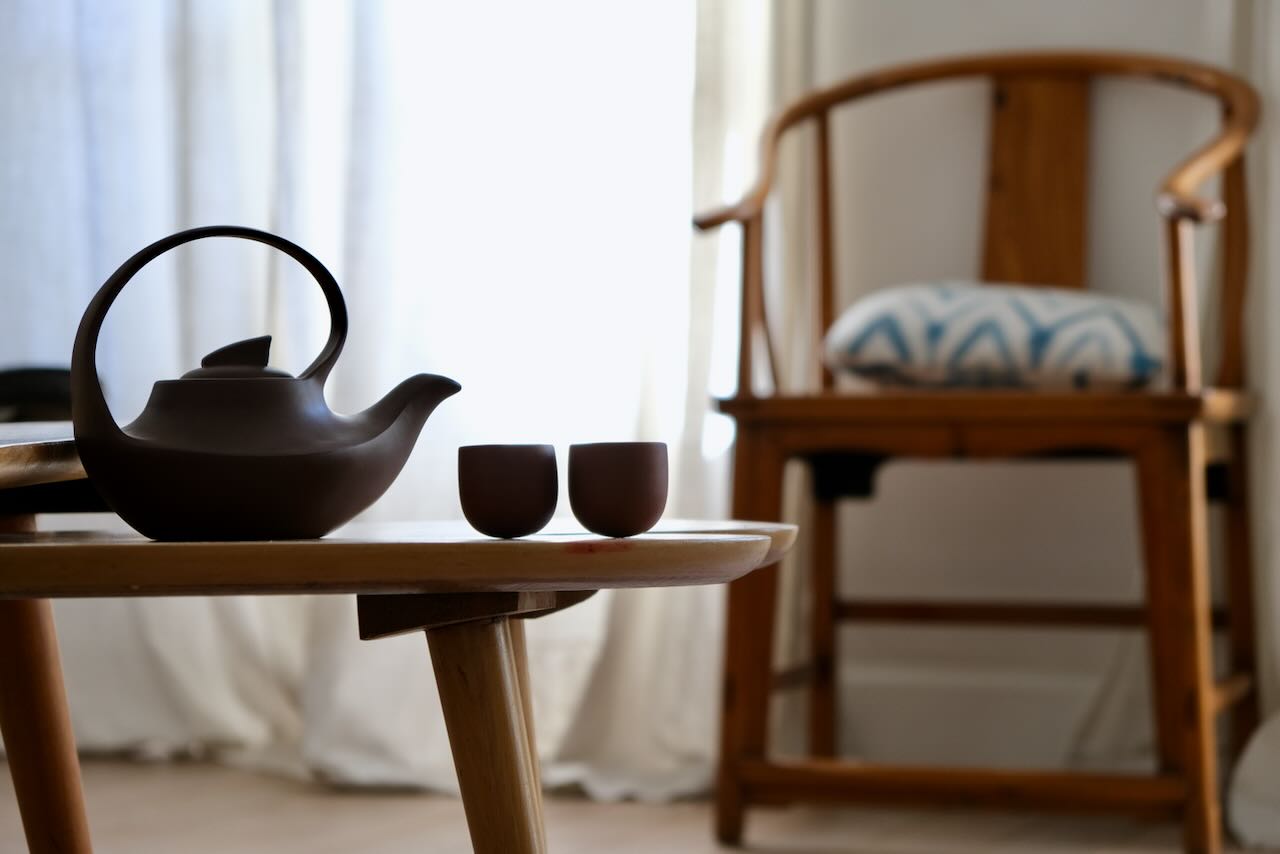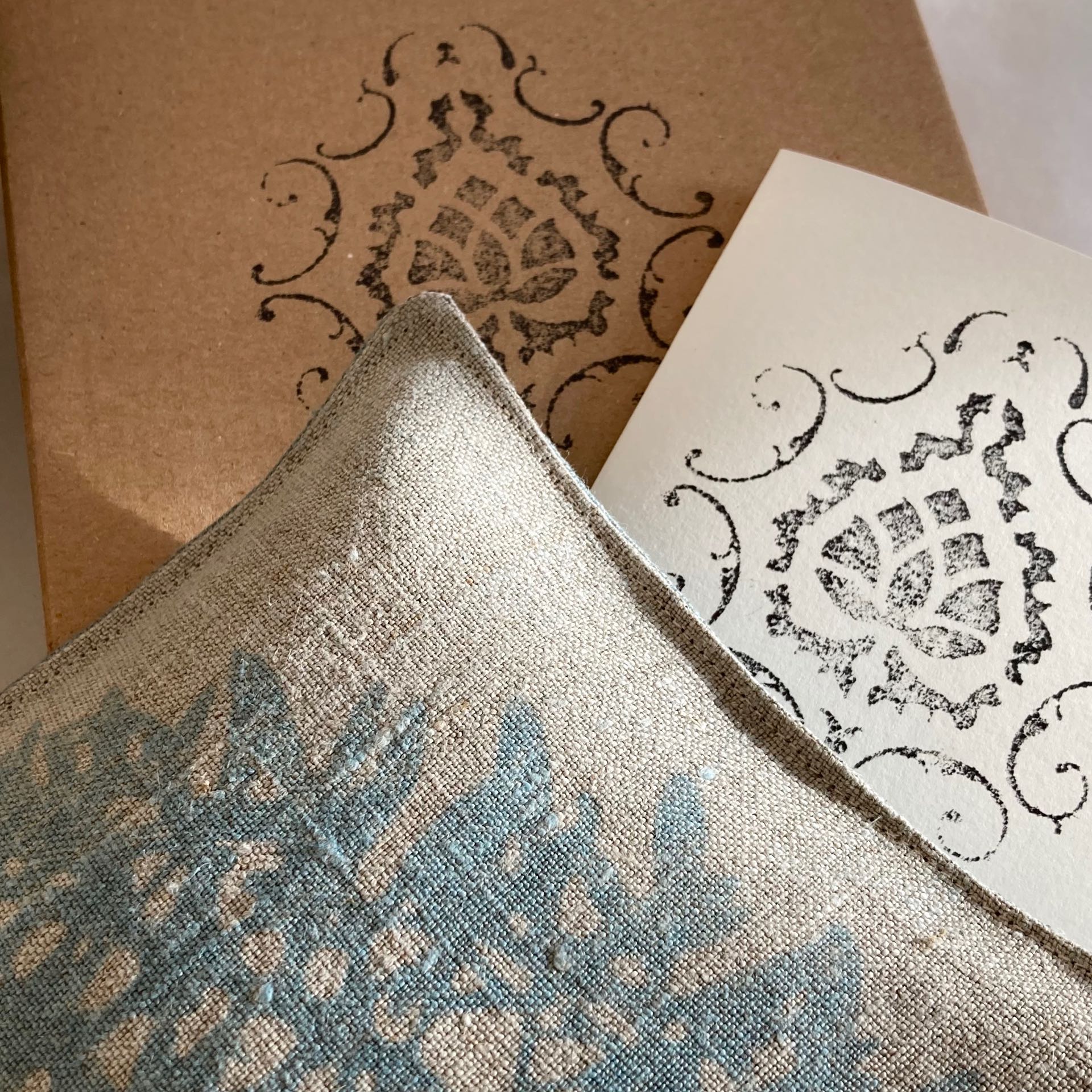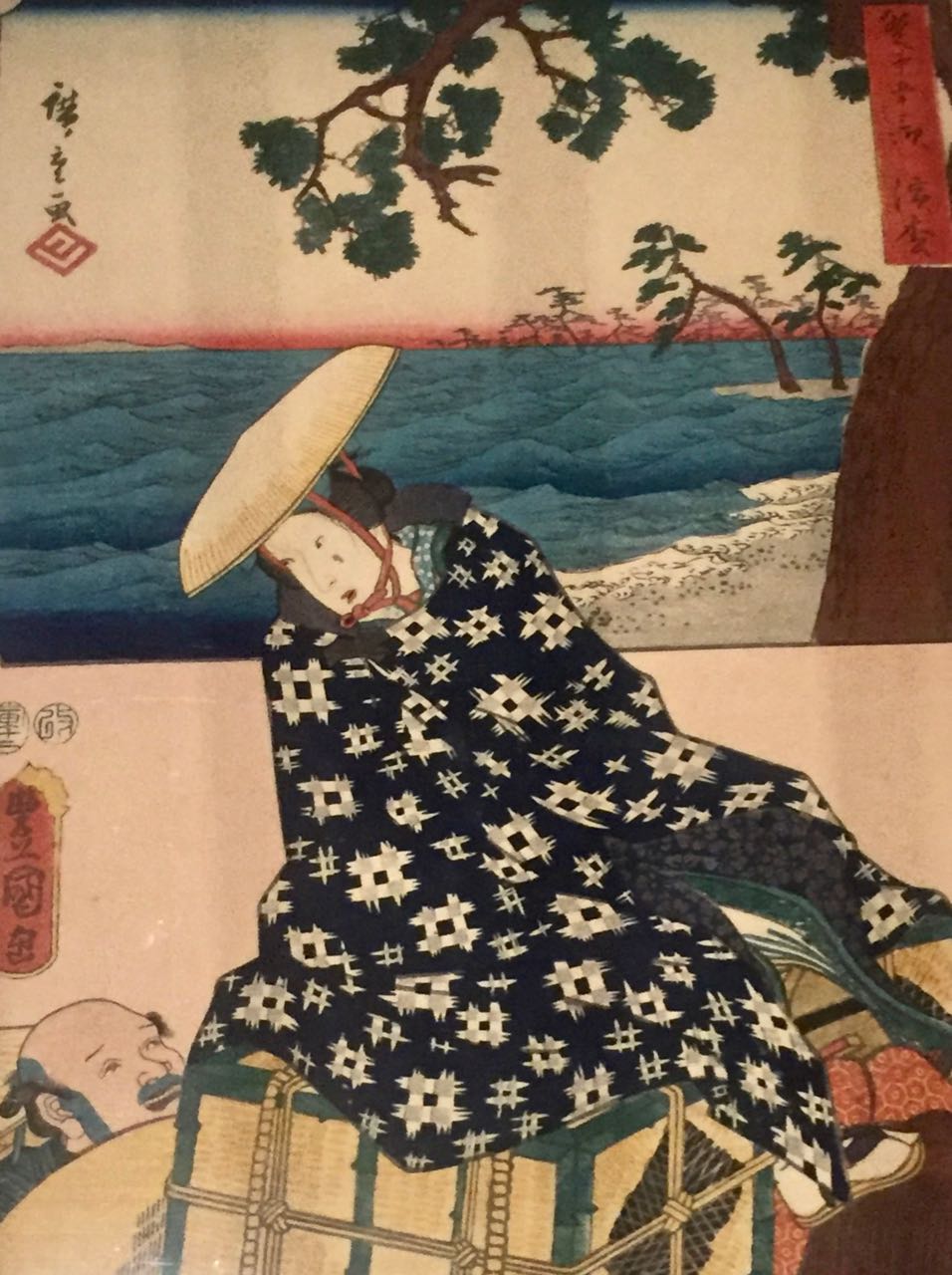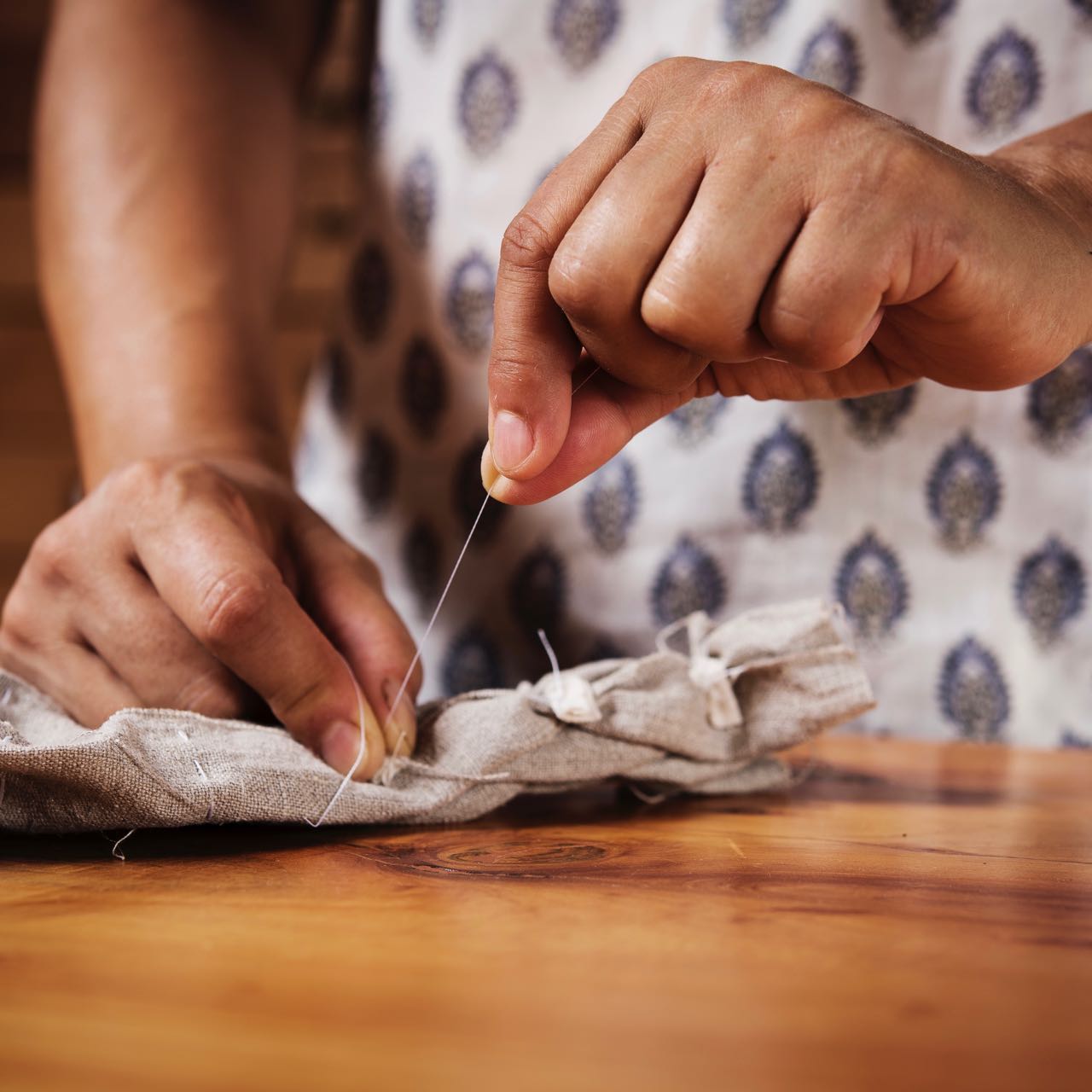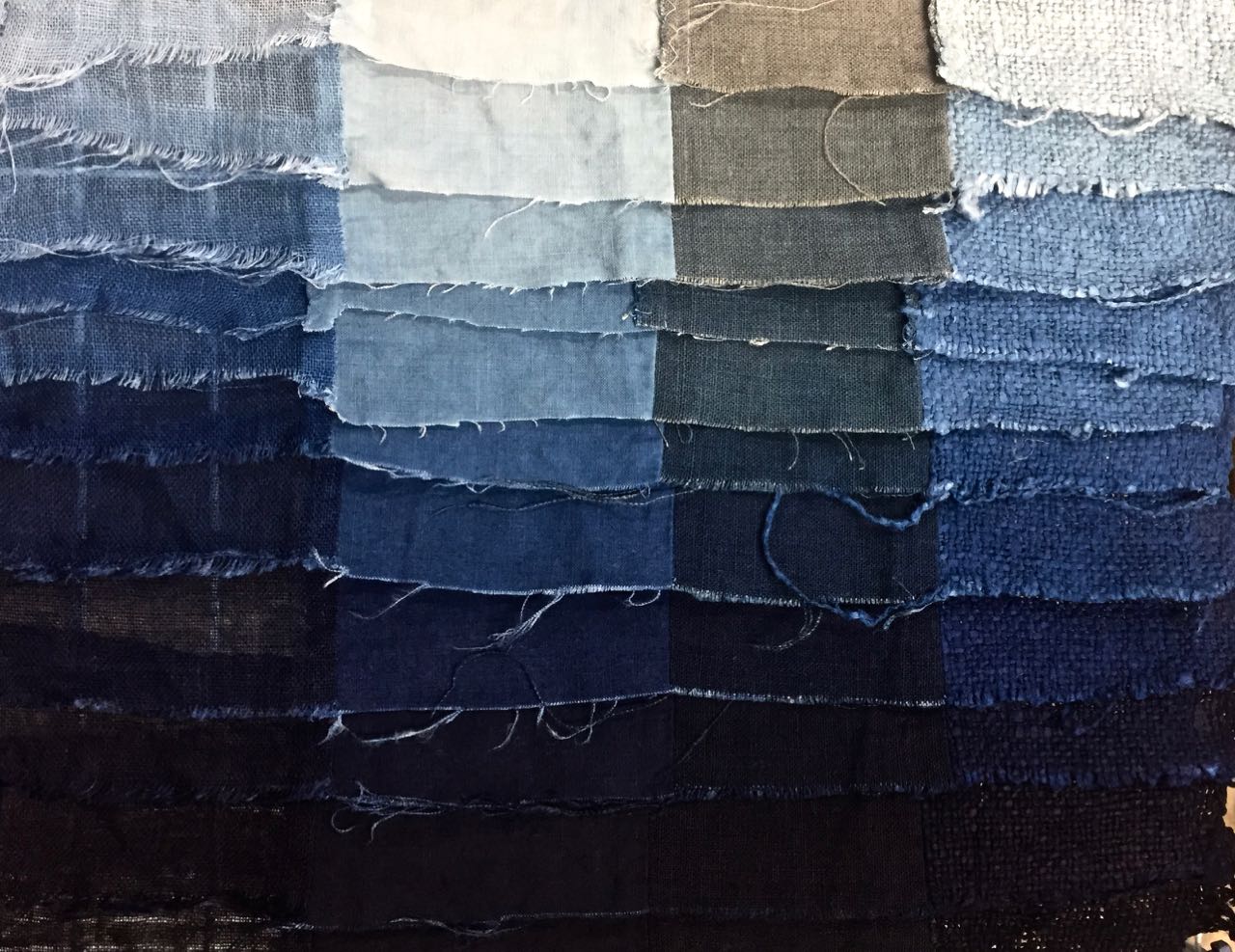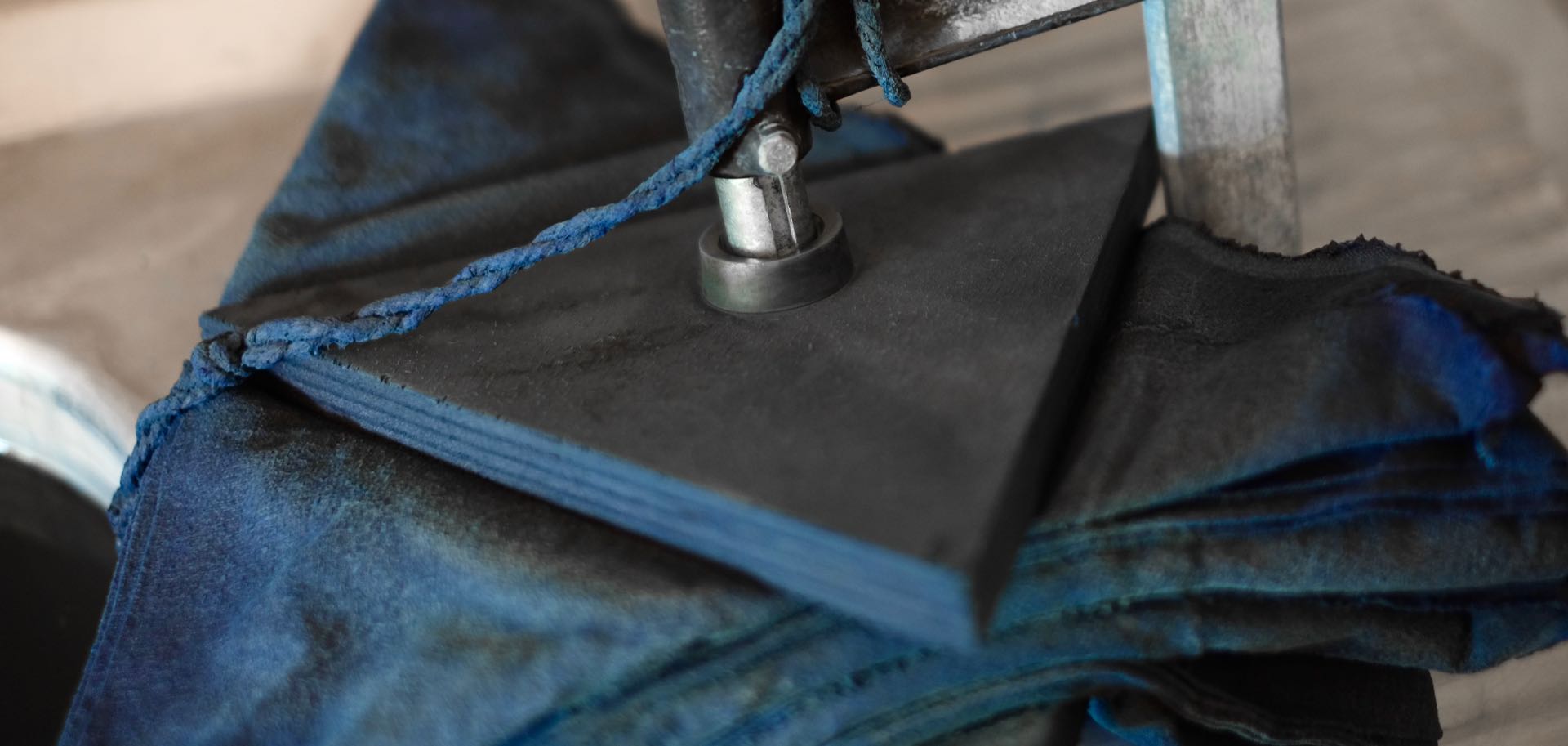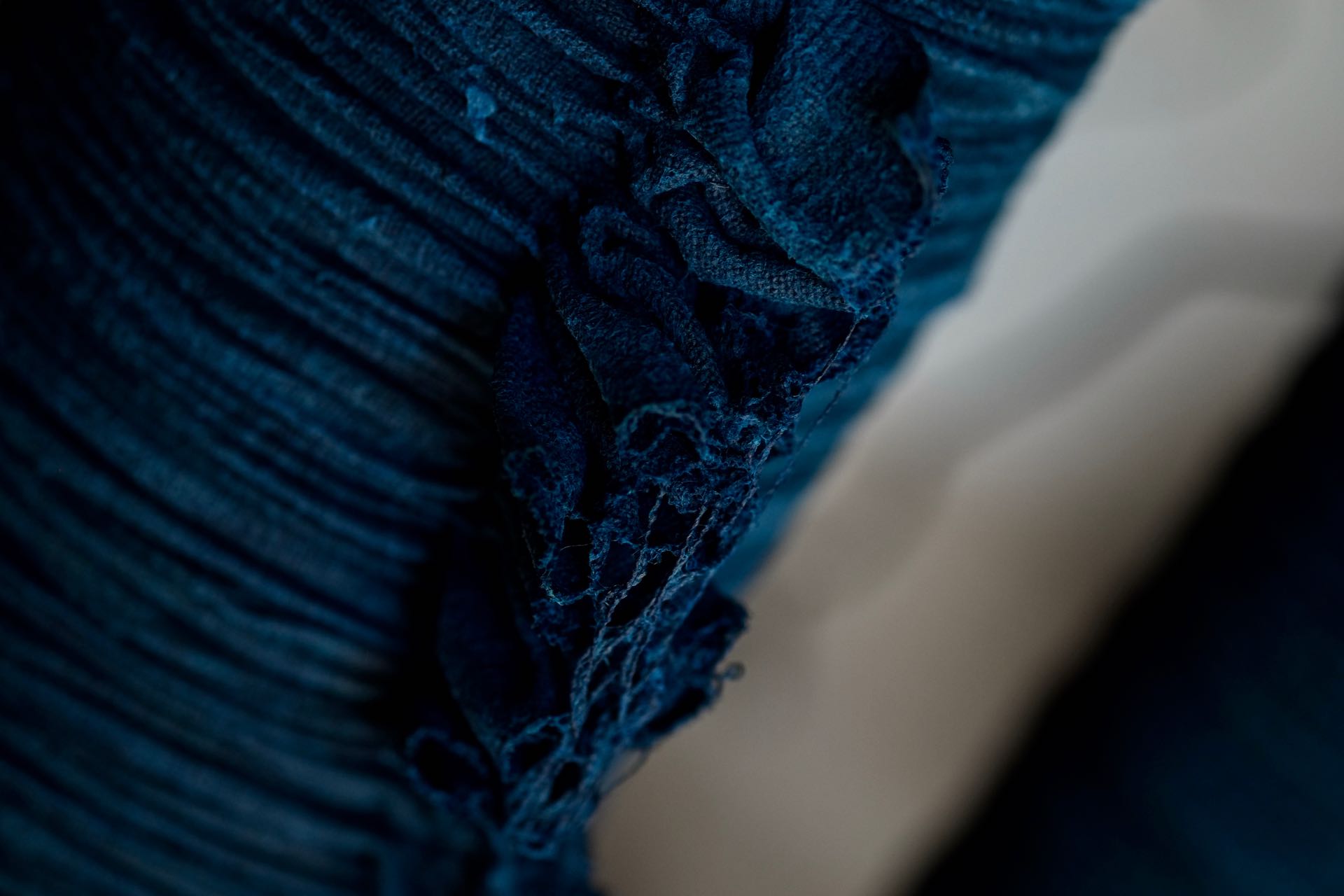I love this pattern, it's irregular regularity and strong contrast. Every line is made by squeezing the fabric in small folds. Those folds are created by small stitches running perpendicular to the lines. A very long process, but once the rhythm is found, I love the...
indigo
Tegumo shibori
Tegumo shibori is a type of tied resist developed in Arimatsu, Japan, where I had the chance of training with master Kuno-san from Kuno Studio (see blogpost in process here) During the Edo period, the busy Tokaido route saw the flourishing of trade. Arimatsu's...
Customised lavender bags for Vaison Ventoux Tourism Office
Very happy to be a partner in the launch of the new Vaison Ventoux Tourism Office logo by creating personalised lavender bags 🙂 You will find them on sale at the lovely tourism office shop which showcases many local producers and artisans. A short video of the making...
Upcycling
It all started as a whim, a wish to cover up a stain on an old favourite linen skirt... and it ended up being a great idea! Soon, one of my clients was asking me to upcycle her lovely white linen dress. Upcycling beloved items of clothing to cover up stains, or...
More shiboris
A fun shooting on the stone stairs of our place in Vaison-la-Romaine, in the heart of the medieval town, where I open the showroom upon appointment. All photos are linked to their respective product or category By the pool at La Baye des Anges where I dye the linen...
Bye Marseille
After over a decade of living in Marseille, we left a piece of our hearts there when moving out. All photos are linked to their respective product or category
Shipping this Christmas
In this exceptional year where many families won't be able to get together, gift wrapping takes on a special importance. I have brainstormed a lot to figure out a packaging that would be both easy on the environment yet elegant. All the materials are based on recycled...
Sur la route du Tokaido @ Musée Guimet
It seems as I haven' really come back from Japan... keep looking for indigo everywhere! On a busy day in paris, I managed to stop at the Musee Guimet to catch an exhibition showcasing a flurry of etchings from the famed Tokaido route. The Tokaido is the east...
Nuishibori
Nuishibori is a name used in Japan for all reserve techniques where stitching and tying is involved. It is a fascinating world I am starting to explore, and I find that applying it to our typically French fabrics created a wonderful cultural melting pot. Stitching and...
Indigo dyeing
In the world of natural dyes, indigo has a place on it's own. Unlike other dyes, it does not need mordanting and can be applied to the fabric straight after scouring. However, it is still very labour intensive, and patience is still of essence here. The dye is applied...
Itajime shibori
Itajime shibori is another reserve technique used to create patterns. This time the fabric is folded and pressed between two pieces of wood. The folds, along with press placement, lead to a variety of patterns. I am always in awe with the magic of those geometric...
Arashi shibori
The Arashi pattern is created by tying a piece of cloth very tightly around a cylinder and then crumpling down the fabric to form little creases. It is one of the numerous reserve techniques used in Japan grouped under the shibori term. The tradition was to use a very...


